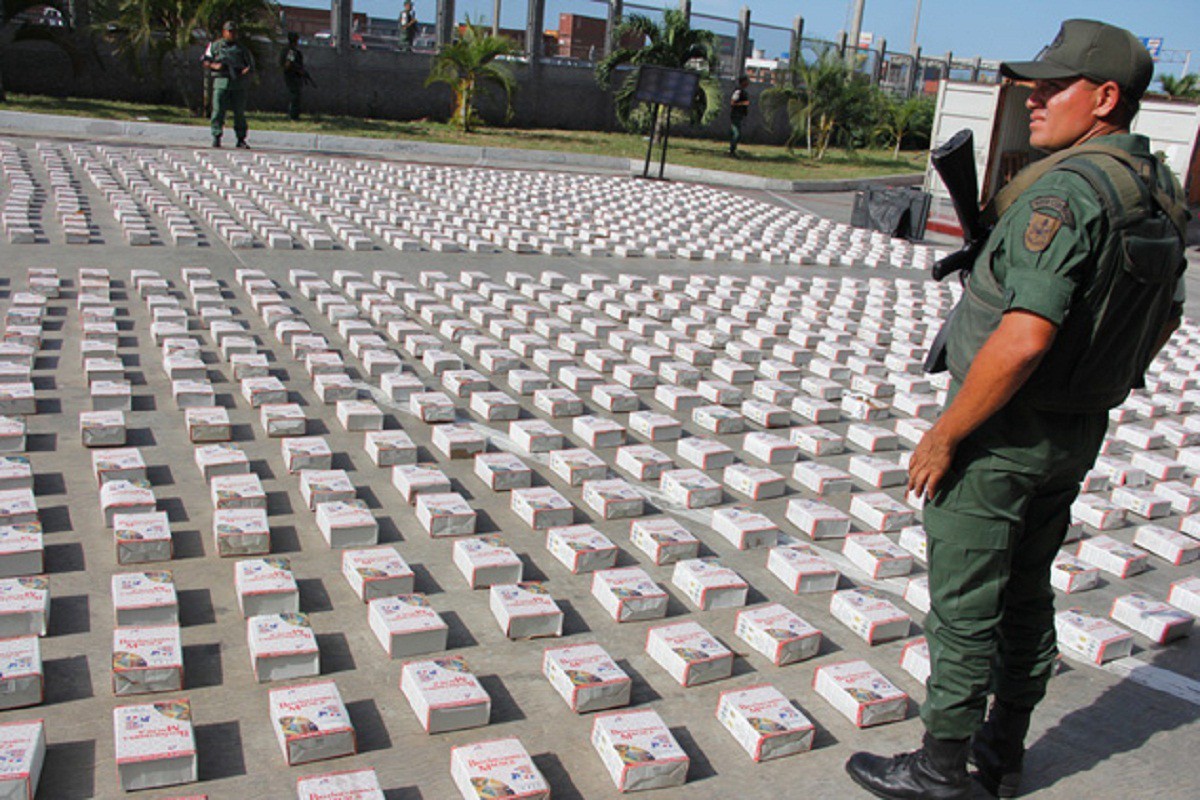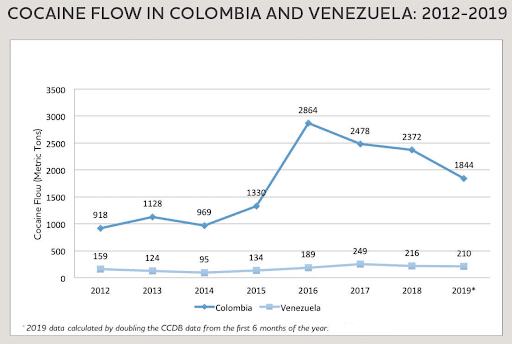Narco-State? The Report that Leaves Venezuela on the Sidelines of the Cocaine Route


Orinoco Tribune – News and opinion pieces about Venezuela and beyond
From Venezuela and made by Venezuelan Chavistas

By Heathcliff Cedeño / Mision Verdad – March 13, 2020
For some years now the narrative that the Venezuelan state constitutes a criminal drug trafficking company, operating in conjunction with other cartels in the region, has been built.
However, the recent study conducted by Geoff Ramsey and David Smilde entitled “Beyond the narrative of the narco: what the data about monitoring US drug trafficking says about Venezuela” , presents hard data disassembling the speech that situates Venezuela as a narco-state and the main cocaine trafficking route to North America.
The work of Ramsey and Smilde published on March 12 reveals that on the map of the cocaine route to the United States, recognized by its authorities as the largest consumer of drugs in the world, Venezuela does not appear as one of the transit nations of narcotics to the North American country.
The document published by the Washington Office for Latin American Affairs (WOLA) used recent data from the Consolidated Interagency Drug Database (CCDB) of the United States, an organization that according to the Department of Defense is the best authoritative and “most trusted” source available to estimate the known flow of illicit drugs.
Off the cocaine route
According to the CCDB, 210 metric tons of cocaine passed through Venezuela in 2018. If we compare this figure with the 1,400 tons that circulated through Guatemala in that same year, it is incomprehensible that the one who is labeled as a narco-state is our country.
Another important detail pointed out by the US body is that, although the flow of Colombian cocaine destined north through Venezuela increased between 2012 and 2017, it was associated with the increase in drug production in Colombian territory.
At this point it is necessary to highlight that Venezuela is historically not recognized as a producer of drugs. The few laboratories dismantled by local authorities have been located in border areas and organized by foreigners.
“The data suggests that the amount of cocaine trafficked through Colombia increased from 918 metric tons in 2012 to 2,478 metric tons in 2017 (an increase of 269%),” and as traffic in the neighboring country decreased, in Venezuela the flow of the drug that transits to North America also decreased.

Another valuable piece of information provided by the CCDB is that around 90% of all drugs destined for the United States are trafficked through the routes of the western Caribbean and the eastern Pacific, not through the eastern Caribbean seas of Venezuela. This also debunks the myth that projects the Nicolás Maduro government as a joint criminal enterprise that capitalizes on the drug trade in the region.

The construction of the myth
One of the first to associate Venezuelan government officials with drug trafficking was Emili Blasco, a correspondent for the Spanish newspaper ABC in Washington, whose record dates back to 2012 when he “revealed” details of Chávez’s illness.
Known for the use of dubious anonymous sources, this Spanish journalist has become one of the most active voices against Chavismo on international media.
In 2015, through false evidence, he accused Diosdado Cabello of being the leader of the Cartel de los Soles and one of the most powerful drug traffickers on the continent. This opinion trend was replicated by all the means that propagandize the anti-Chavista line and was assumed to be true.
Since then, Blasco has not shown any evidence linking the Chavista leader to drug trafficking.
Last year, appealing to the same strategy, the Madrilenian published a journalistic work in which he pointed to Chavista leaders using the shipments sent from Mexico to receive camouflaged cash as a form of payment for the shipment of drugs from Venezuela.
Within days of this news release, the United States applied new unilateral coercive sanctions against Venezuela. On that occasion, the attack was directed against companies linked to the importation of food that supplies the Local Supply and Production Committees (CLAP), the state’s flagship program for food protection for the Venezuelan population.
A file against Venezuela?
The Americans charged with conducting the investigation for WOLA, an office that is not precisely Venezuela’s ally and that promotes “regime change,” emphasize that for some politicians in that country, “the true scope of drug trafficking is often magnified”; they refer to the radical wing that sees a negotiated solution as impossible as it cannot be achieved with a “narco-government”.
The impossibility of supporting the narco-state thesis is qualified by WOLA with indications that appeal to the deterioration of Venezuelan institutions, where there is supposedly no impartial and transparent justice system. It also refers to the proliferation of armed groups and organized gangs linked to drug trafficking. This resource is used to keep alive the need for a change of government in Venezuela.
Despite the fact that the report reveals the reality of the cocaine route to the United States, the agency does not stop pointing to Venezuela as a negative element in the region, even when it questions other more radical and violent ways of ending the Bolivarian Revolution.

With the fall of the narco-government myth, two real problems are exposed. On the one hand, the United States as the largest consumer of cocaine, and on the other, Colombia as the largest producer of this drug.
Given this fact, Venezuela remains geographically and symbolically in the midst of the narcotic drive of the former and the desire of those who capitalizes it in economic terms of the latter.
The report was reflected in sum with its last suggestion dedicated to the Colombian government: “Officials and members of the United States Congress should encourage the Colombian authorities to apply a sustainable approach to contain and reduce coca cultivation and cocaine production.”
Undoubtedly, the “real data” on the flow of drugs is a defeat for those who have sought a way to locate Venezuela in the middle of an alley where other actors trade.
Source URL: Medium/Mision Verdad
Translated by JRE/EF